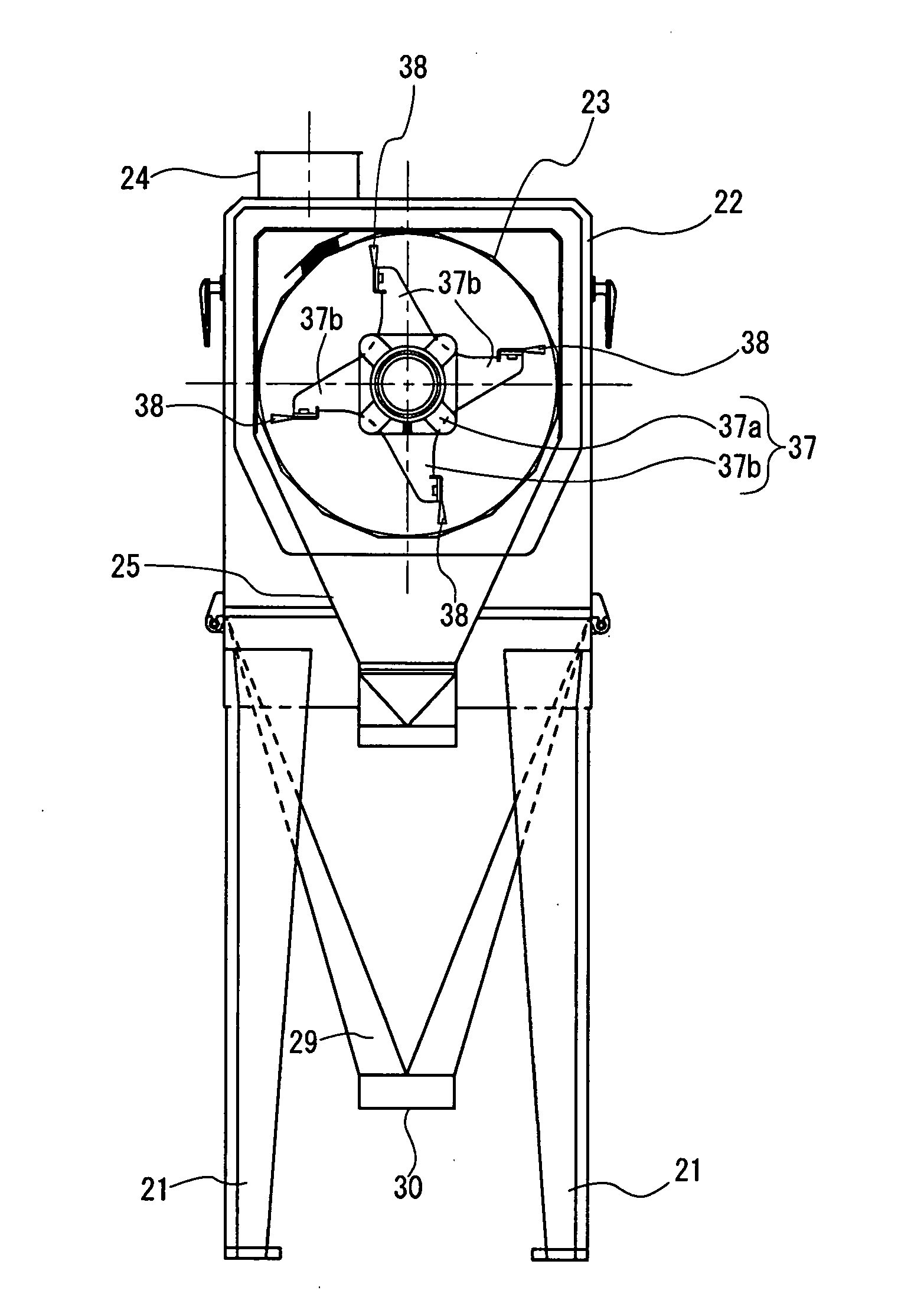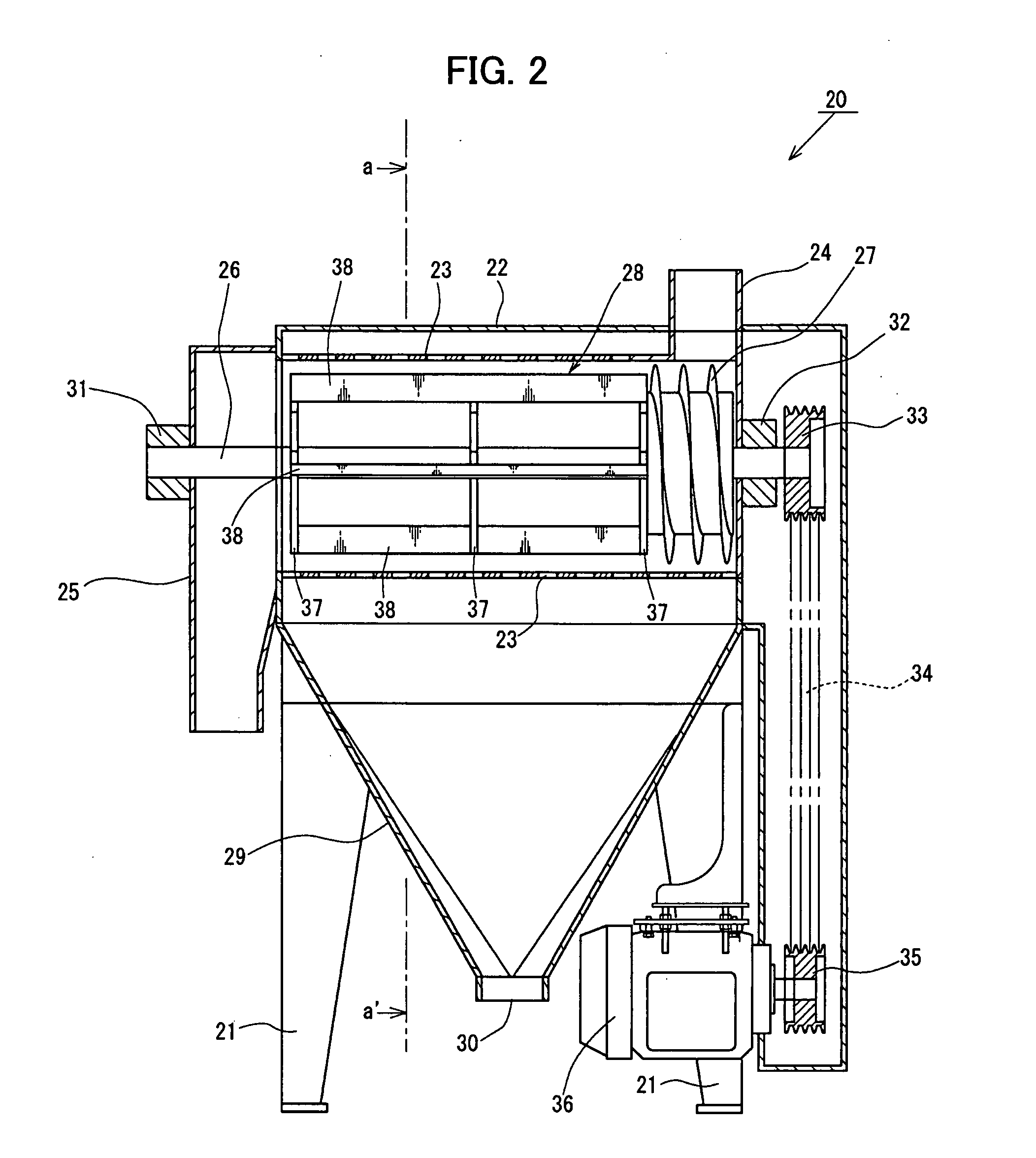Method of and apparatus for processing corn grains for production of ethanol
a technology of corn grain and ethanol, which is applied in the field of corn grain processing equipment for ethanol production, can solve the problems of increasing production equipment and facilities, complicated production configuration, and increasing production costs, and achieves the effects of improving the efficiency of a subsequent refining process, easy extraction, and easy separation from gri
- Summary
- Abstract
- Description
- Claims
- Application Information
AI Technical Summary
Benefits of technology
Problems solved by technology
Method used
Image
Examples
Embodiment Construction
[0027]FIG. 1 is a flow chart illustrating a method for processing corn to produce ethanol according to the present invention.
[0028]In FIG. 1, material corn grains are first supplied to a sifting process in which impurities and foreign matter are separated and removed. A separator called a milling separator indicated by reference numeral 1 is, for example, one that uses a two-stage sieve comprising an upper sieve consisting of a perforated metal plate with holes approximately 15 mm in diameter and a lower sieve consisting of a perforated metal plate with holes approximately 4 mm in diameter. The two-stage sieve at the upper sieve allows the corn grains to pass through the holes in the sieve but catches and separates overtailing large impurities from the raw material corn grains, whereas at the lower sieve it allows impurities smaller than the corn grains to pass through the sieve but catches and separates the overtailing raw material corn grains, thus enabling both large and small im...
PUM
 Login to View More
Login to View More Abstract
Description
Claims
Application Information
 Login to View More
Login to View More - R&D
- Intellectual Property
- Life Sciences
- Materials
- Tech Scout
- Unparalleled Data Quality
- Higher Quality Content
- 60% Fewer Hallucinations
Browse by: Latest US Patents, China's latest patents, Technical Efficacy Thesaurus, Application Domain, Technology Topic, Popular Technical Reports.
© 2025 PatSnap. All rights reserved.Legal|Privacy policy|Modern Slavery Act Transparency Statement|Sitemap|About US| Contact US: help@patsnap.com



